Africans in America
Slave trade became a big business in the United States from 1600 to 1700, mainly because of increased agriculture and improved technology that contributed to high production. Many workers were needed to work on farms, yet the American population could not sustain production demands. Some people had to be ferried from Africa to work on European farms. The issue of profitability was of great concern to landowners meaning that they could not afford to pay people to work on their farms and still maintain high returns.
In this regard, they had to find an alternative that would provide quality labor, but at no cost. Africa provided this solution since slaves were transported from the region and were ferried to the US to work in the fields. In 1619, the history was made in America when the first bunch of African slaves arrived in the country ready to work for the white settlers (Davidson, Delay, and Heyrman 89). A Dutch slave trader sold all African slaves he had ferried from Africa in Jamestown.
He received food that would sustain his employees and his family through the sale of slaves. Africans were considered indentured servants meaning that their freedom would be curtailed as they belonged to their masters. This was equivalent to the legal position of the poor British nationals, who engaged in trade many years ago.
In Virginia, the first slave was seen in 1956. Laws were quickly made to outline the status of black people. Most slaves were concentrated in the south since the southern population was mainly made up of white settlers who practiced agriculture on a large-scale. This could be compared to the north, which practiced trade, as its major economic activity. In this sense, many slaves would be found in the south since they worked in farms belonging to white settlers.
Throughout the 15th century to the 16th century, Jamestown exported huge volumes of tobacco to Europe and other parts of the world, something that encouraged other southern states to adopt slavery mode of production. By 1680, Virginia depended on slaves for production meaning that they were the most important component of trade in the region. Towards the end of the 17th century, the number of slaves in Carolinas was almost half of the entire Africans in the United States. This shows that the southern states depended so much on slavery since they were agricultural states.
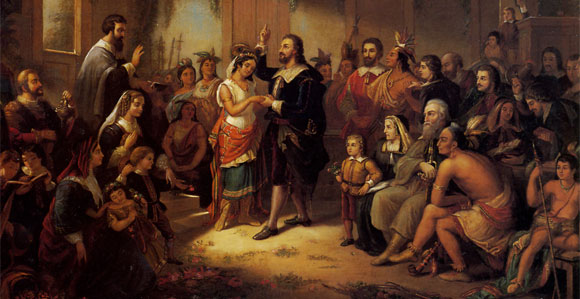
The picture above shows one of the masters in Jamestown’s wedding while slaves are witnessing. Slaves had no right to engage in any activity, but instead, their major role was to serve the master. They were not considered human beings since masters could do all sorts of things while they watched. Based on this, a sense of consciousness developed among Africans after witnessing one of the brutal mistreatment in world history (Davidson, Delay, and Heyrman 112). Africans understood that Europeans could not survive without them since they offered an important service.
Eighteenth-Century America
The New England colony consisted of Connecticut, Vermont, Rhode Island, Massachusetts, and New Hampshire, which was made up of mainly Welsh and English immigrants. The first immigrants were pilgrims and puritans. This category of individuals had been oppressed for a long. They wanted a place where they could settle and carry out their economic activities. They engaged in fishing, timber production, and farming. They produced timber mainly for sale.
Oppressive conditions compelled the Quakers to leave the colony. The growing season was shorter than that of the Mid Atlantic Colony. The following diagram shows the population composition of the southern region. It is clear from the diagram that the African population consisted of a considerable figure, yet they owned nothing, apart from their labor.
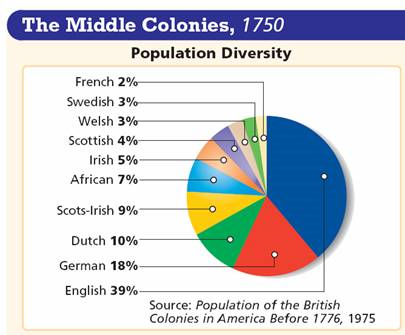
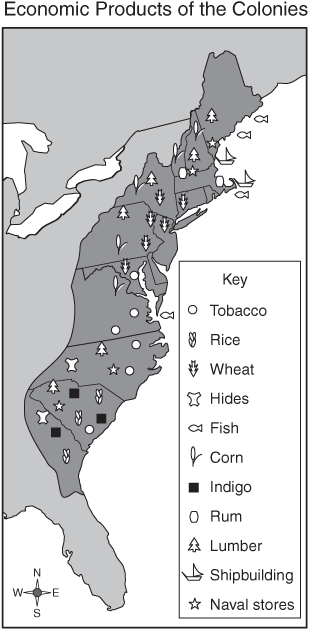
The above diagram shows major products manufactured in the Mid Atlantic Colonies, which included Delaware, New York, Pennsylvania, Maryland, and New Jersey. Among the first colonists to settle in the colonies were Quakers from England and Germany. The growing season was longer than in New England. There were big cities, which absorbed most of the labor force. They exported wheat, livestock, and barley to the West Indies.
Except for Hudson Valley where the Dutch held huge pieces of land, the size of land owned by a single individual was 40 to160 acres. The middle colonies were made up of more communities as compared to the other colonies. They offered citizenship to any immigrant who subscribed to the Christian faith. Most immigrants, especially from Germany, were concentrated in Hudson Valley. The Germans, who originated from the Rhineland, brought with them their advanced technology in agriculture, which helped the middle colony to be economically vibrant.
Chesapeake colonies included Maryland and Virginia. They were made up mainly of English speaking Indians. These people worked in tobacco plantations. Unlike the mid-Atlantic colonies, there was little urban development in the Chesapeake colonies because landowners built a transport system near the plantations, which were located mainly along the rivers. Maryland and Virginia were low-lying flat areas.
They were characterized by incidences of salt poisoning, human waste, and stagnant water. The survival rate for immigrants was very low, with 40 to 50 percent of the servants succumbing to death from typhus. By 1700, most people preferred to settle in the Piedmont area. Slaves were imported from Africa hence increasing the population in the Piedmont area.
Production of tobacco increased in direct proportion to the increase in population. Tobacco was their main source of income. Farms were in three to ten-acre plots along the riverbanks. Ships had access to the waterways and would access about 2000 miles while transporting tobacco. Larger planters had storehouses, which stored tobacco bought from farmers. Wheat and maize were the crops planted in the 18th century by colonialists.
The only central government was the local government, which was made up of the county seats. The county housed an Anglican church, a courthouse, a county store, and homes. The southern colonies included Georgia, South and North Carolina, Kentucky, and Virginia. Due to the fertile soil and good climate, the south grew crops, such as tobacco and cotton. It was in the south that slavery was practiced. African slaves worked on farms. The slave owners were mainly English.
Rebellion
American consciousness changed significantly towards self-governance in 1776. Americans began to understand their laws, which stated that every person had the right to participate in economics and politics. They did not like being ruled by the British monarchy. They wanted their government, which would be elected by their people. They also knew how to form such a government. Americans wanted a government, which was democratic and would address the various concerns of the governed people.
They hoped to achieve this goal by electing a representative from each of the dissenting colonies to represent their interests at the Congress. For them to achieve this, the first thing they needed to do was to change the constitution, which would then allow America to be independent of being governed under the British monarchy. All laws relating to colonies, such as taxation laws, were made in Britain without even consulting American colonies. This fact caused a lot of resentment among the American people.
This idea is what is thought to have brought about a change in the American consciousness. The desire for them to have an independent government was so strong that they were prepared to fight for it. Like the Biblical “David against Goliath”, they strongly hoped to defeat the British troops.
The British army was not only sufficiently armed but also experienced in war. However, the Americans within the colonies were ill-equipped for war. They did not have an organized army like the British. This fact did not deter them from making plans for war with the British. Of all the British colonies in America, only 13 of them rebelled against the British. They included Massachusetts, Connecticut, Georgia, Delaware, Pennsylvania, Virginia, Maryland, Rhode Island, Georgia, New Hampshire, New Jersey, North and South Carolina. It is important to understand why these colonies rebelled. One issue that caused the rebellion was the issue of lack of representation of Americans in the British government. The British government used to make laws, which affected the colonies, and yet the colonies were denied their contribution in the making of these laws. This oppression led to a lot of resentment among these colonies, which then rebelled.
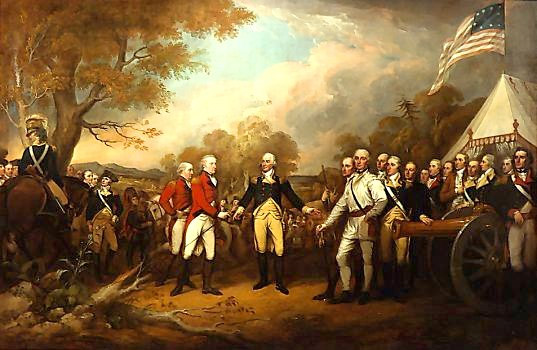
As the figure below shows, the most volatile area of the colonies’ revolt against British rule was Boston, Massachusetts. It is at Boston in which there was a rebellion against British tax, which was imposed on tea. The Americans knew that if the tea would be offloaded from the ships, it would be subjected to British tax. They vowed not to upload any tea from the ships. Finally, there was a huge rebellion and the Americans began throwing tea bags into the sea. This rebellion came to be known as the Boston Tea Party.
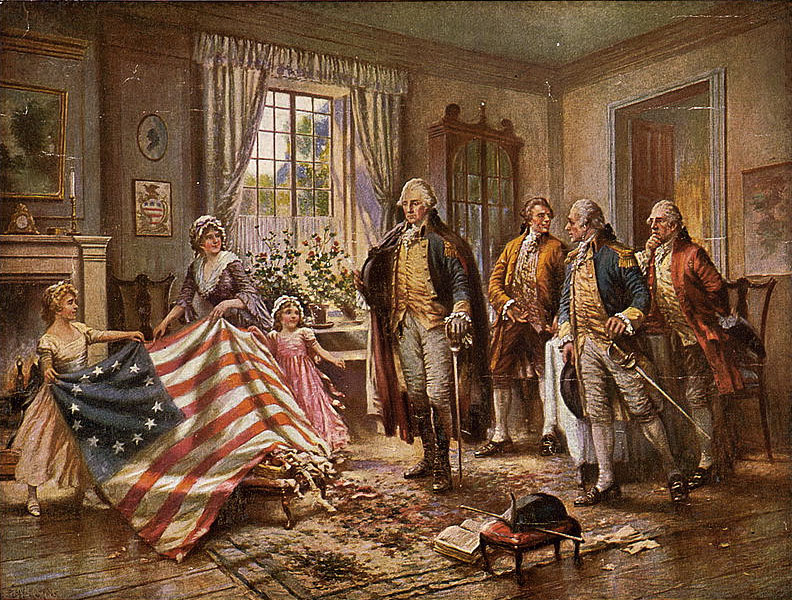
Britain v. America
The Americans had the privilege of fighting their enemies from their home ground. This fact meant that they were better prepared to fight because they had enough ammunition. The British however had to transport their troops and artillery for long distances across a very wide ocean.
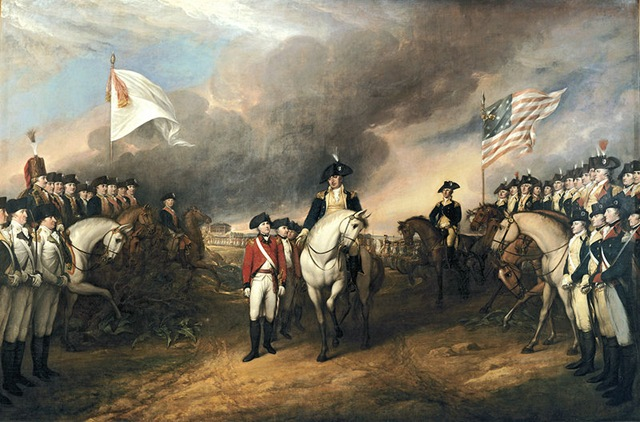
British officers especially General William Howe made bad decisions for his army. During the start of the war, he was not quick in decision-making leading to Americans’ “survival” in the war. Instead of leading the British army in the fields, he remained in the city enjoying a luxurious life. General John Burgoyne was forced to surrender at Saratoga after he was left to lead the army alone. He did not receive help from General Howe.
Secondly, Americans received considerable support from the French. Benjamin Franklin, the American minister for France helped advance the American cause. The British public was not supportive of the war. A writer by the name of Thomas Paine wrote a small document named, “Common Sense”. The document opposed King George and his rule and championed the independence of the United States of America.
This fact led to the action of the opening of the ports to be used by ships from other countries by the Continental Congress. The document by Thomas Paine encouraged the people to fund state governments and to write a constitution for each government. The leadership of George Washington made the Americans win the war. George was not only experienced in leading soldiers, but he was also brave and honest. He had confidence that Americans would win and instilled this attitude in his people. He was determined in pursuing the goal of winning the war. The American Revolution was given a major “boost” when religious ministers led the opposition against British rule by giving it a religious dimension.
Many people believed that it was the will of God for America to be independent and the British rule would end (Boix, 24). Ministers participated fully in the fight against British rule in various capacities. Certain ministers led the troops in battle, others worked as military chaplains, others as secretaries of committees dealing with correspondence and as members of the National Congress.
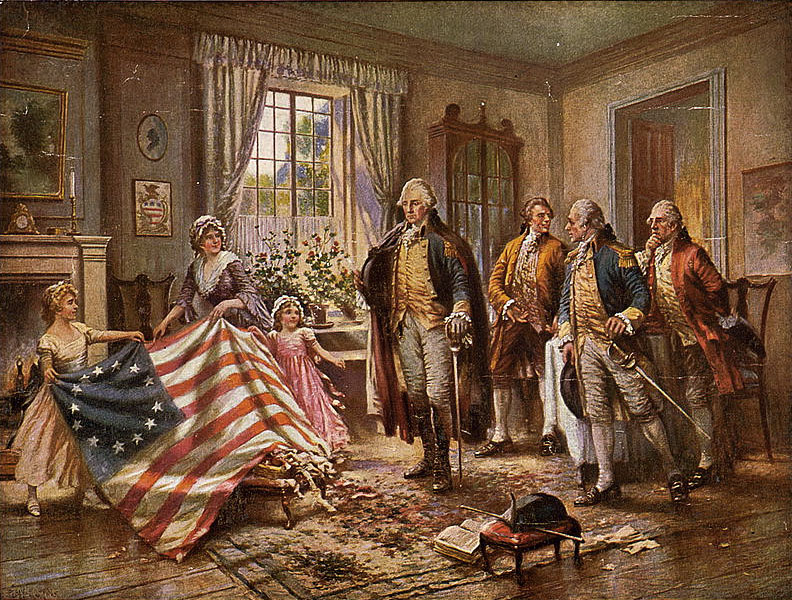
The Church of England was split even though their ministers had sworn under oath to support the King. The church operated without church ministers in certain areas. However, in other churches, religious activities continued without being disrupted or influenced by the war between the Americans and the British. Certain church leaders persuaded their followers to believe that America would be the ultimate destiny of Christ’s heavenly empire for 1000 years.
Therefore, such ministers believed that winning the war against the British was part of God’s bigger plan for humanity. The signing of a peace pact in 1783 in Paris signified the end of the American Revolution. It also recognized the independence of the United States.
Works Cited
Davidson, James, DeLay, Brian, and Heyrman, Christine. US: A Narrative History. McGraw-Hill Higher Education: New York, 2012. Print.